Our attention is limited, and diagrams waste attention with complicated eye movements and unreliable image scaling. The typographically scaled Bissantz’Numbers are the solution: number and image become one, making messages from controllers unambiguous. The trend of universal “app-ification” is advancing and has reached managers. These were the key messages at our sixth Executive Forum in Berlin.
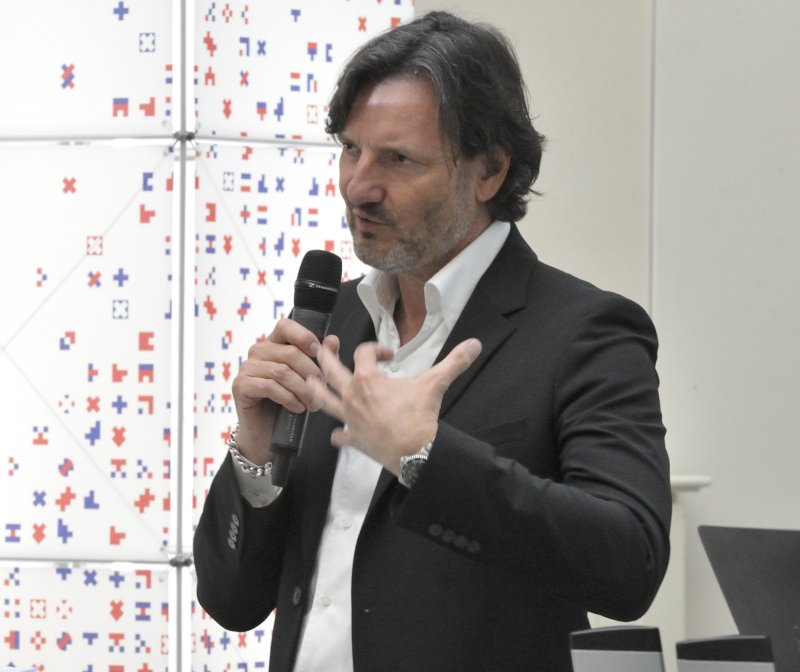 In his keynote speech, Dr.Nicolas Bissantz explained why diagrams are the wrong approach and how Graphic Tables and typographically scaled Numbers can restore the clarity and simplicity.
In his keynote speech, Dr.Nicolas Bissantz explained why diagrams are the wrong approach and how Graphic Tables and typographically scaled Numbers can restore the clarity and simplicity.
On 17 May 2018, we were back in Berlin – with our sixth Executive Forum. The ballroom of the Hotel de Rome was packed and anyone who has been to an Executive Forum before, knows what this is about: innovation, research, results and insights that go far beyond our products and provoke changes in management thinking.
Diagrams are more harmful than useful
In his keynote speech, Dr. Nicolas Bissantz strongly criticized current practices in the field of Business Intelligence: Diagrams are the wrong way to support management decisions. Numerous mistakes in annual reports as well as in the media have demonstrated that the rules for providing reliable images – even of simple business questions – are too complex in our hectic daily lives. Users regularly fall into the trap of scaling graphics incorrectly and the “AI” of common programs for creating business graphics is unreliable. Even simpler types of diagrams are no alternative. They often only appear simple at the surface, while deciphering them requires complicated eye movements. Bissantz believes: Simple means comprehensible and reliable at the same time.
Bissantz provided vivid examples to make clear that managing directors and executive board members should no longer be expected to suspiciously check the integrity of each diagram with a calculator and ruler, or to blindly trust the visualization skills of overburdened data scientists. Business Intelligence literature so far hardly covers topics such as the integrity of graphical coding – and where it does, information is incomplete, contradictory or partly wrong. Schools and universities lack systematic curricula and teachers with the appropriate knowledge. This is the only explanation why even grossly incorrect “charts of doom” in the Wall Street Journal or German daily newspaper Die Welt have not been exposed as methodically wrong. At the Forum, Bissantz postulated the recollection of standards, like in tax accounting and auditing, where reporting standards are commonly used and binding towards fiscal authorities. Business people must question the paradox of today’s information culture: conservative balance sheets for reporting on results versus colorful pictures to achieve exactly these results.
Numbers are the best pictures
After years of fundamental research, Bissantz managed to decode the effect of visual elements and made it predictable. One result are the typographically scaled Bissantz’Numbers: a large value is displayed as a large number, therefore the larger the value, the larger the number. Bissantz’Numbers combine the effectiveness of images with the objectivity of numbers by limiting the graphical aspect to the purpose of priming eye movements. Moreover, Bissantz’Numbers are simple and appealing. As the presentations by Bissantz customers ABUS and Porsche also illustrated: integrity and appeal are not contradictory.
 Numbers are the best pictures. Scaling and color draw the eye of the observer.
Numbers are the best pictures. Scaling and color draw the eye of the observer.
Innovative interaction
Matthias Kauffman from Porsche was pleased to be the first to present a Bissantz innovation. Fruitful interaction between Bissantz and Porsche put the finishing touches on the new DeltaApp, since Porsche had accepted the role as “innovation partner” and supported usability tests during the development of the app. Kauffmann had also brought along and set up another innovation: the kiosk system which Porsche has installed in sales planning and that provides real-time signals about the status of sales and deliveries. The third joint innovation also sparked strong interest among the participants: the application of data-mining algorithms for in-depth root-cause analysis. During the subsequent discussion, Kauffmann and Bissantz stressed that attention is a scarce resource we should handle with care; and that we overestimate how much information actually reaches our target audience.
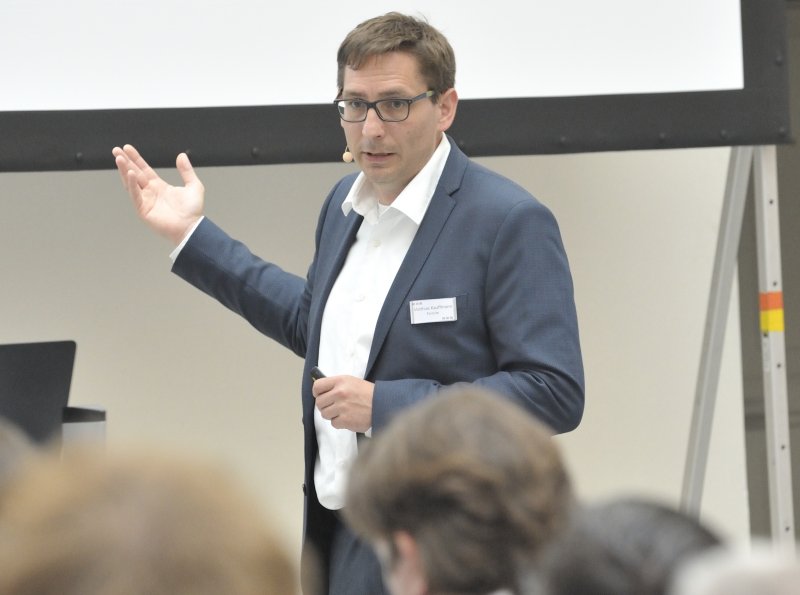 Matthias Kauffmann, Strategy and Reporting Manager at Porsche, presented innovative interaction concepts with DeltaMaster.
Matthias Kauffmann, Strategy and Reporting Manager at Porsche, presented innovative interaction concepts with DeltaMaster.
Towards an “app-conomy”
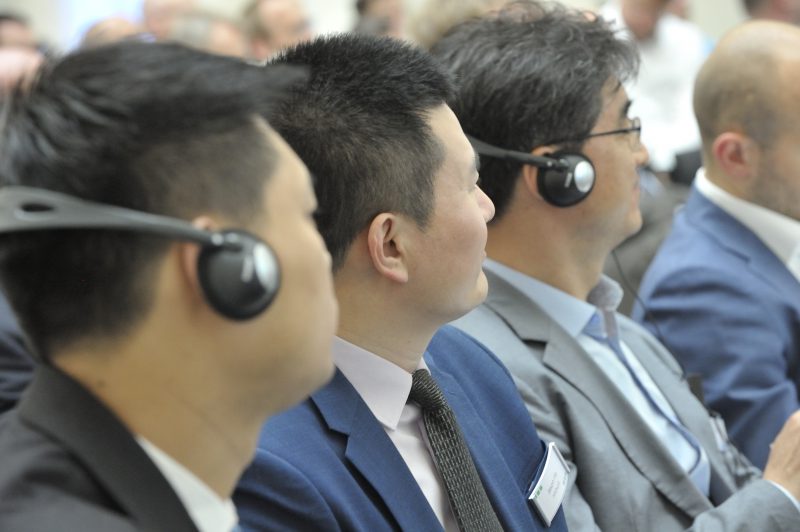 At the forum, Bissantz Asian partners were represented by Xing Dong and Jason He from Hydsoft, China, and Jon Hyun Lee from Solva Technologies, South Korea.
At the forum, Bissantz Asian partners were represented by Xing Dong and Jason He from Hydsoft, China, and Jon Hyun Lee from Solva Technologies, South Korea.
New Bissantz partners Jason He and Xing Dong from Hydsoft (China), and JongHyun Lee from Solva Technology (South Korea), had travelled to the Executive Forum from Asia. Invited by Bissantz to provide a glimpse into “digital life” in China, He showed a very personal five-minute movie illustrating the “app-ification” of daily life in the world’s most modern national economy. In their subsequent exchange, Bissantz and He discussed the role of cultural differences in designing management information. He confirmed that different interpretations of colors and shapes exist in the context of everyday life in China but that they are of no importance in management. Red is a color that stands for warmth, joy, luck but nevertheless also represents – like all over the world – loss, negative deviations and other values that business people would like to reduce.
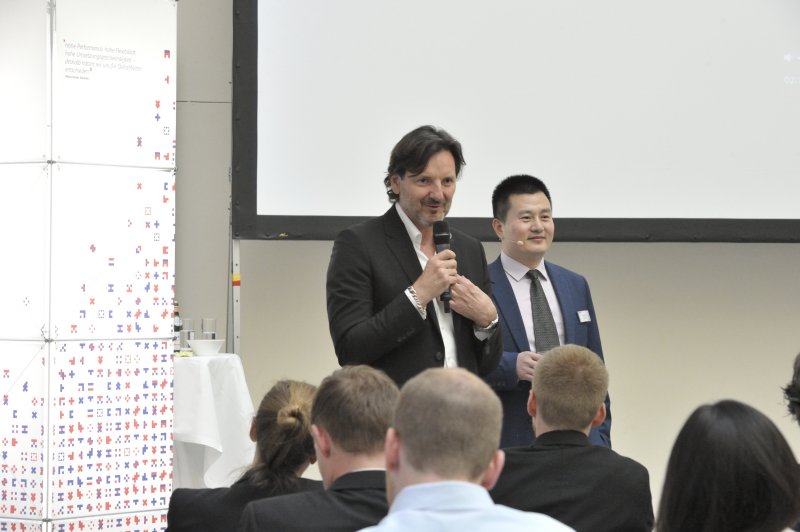 Jason He, Hydsoft, and Dr. Nicolas Bissantz gave insights into “digital life” in China and how the world’s largest „app-conomy“ will shape the future of business intelligence.
Jason He, Hydsoft, and Dr. Nicolas Bissantz gave insights into “digital life” in China and how the world’s largest „app-conomy“ will shape the future of business intelligence.
Bissantz passionately urged his customers to take China’s speed of innovation seriously. He now looked towards Beijing or Shanghai rather than the United States to discover for his own company how information technology is changing and what this will mean for entrepreneurs in Germany and Europe.
Innovative planning
Stefan Schüler and Sabine Krüger from ABUS presented their experiences with the introduction of a sales planning system. The number of input masks can be drastically reduced with interactive DeltaMaster functionalities, such as Navigation. Reducing the system to the essentials also brings down the cost for preparing and using the application. Users particularly appreciate the intelligent and powerful planning algorithms in DeltaMaster. In her live presentation, Krüger demonstrated that Bissantz’Numbers work as effectively in planning as in reporting. ABUS has been using DeltaMaster since 2009 – including in sales as well as external sales, procurement and product management, and controlling. The company is also planning to integrate data for logistics and returns. Beyond this impact at the level of specialized departments and company management, DeltaMaster also supports quality assurance in upstream systems, for example to clear up data inconsistencies. In summary, it is hard to imagine ABUS without DeltaMaster, as Krüger stated.
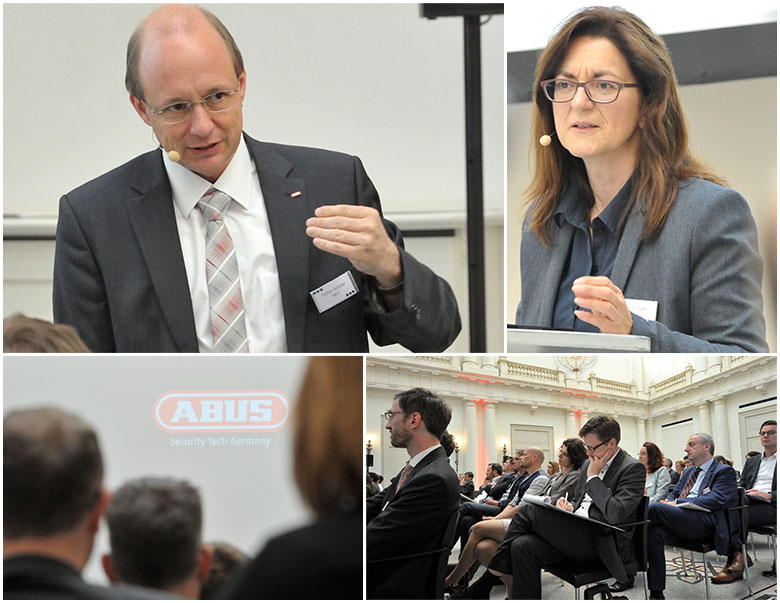 Sabine Krüger, IT Project Manager, and Stefan Schüler, IT Manager at ABUS, demonstrated innovative planning with DeltaMaster.
Sabine Krüger, IT Project Manager, and Stefan Schüler, IT Manager at ABUS, demonstrated innovative planning with DeltaMaster.
Innovation becomes standard
Dr. Gerald Butterwegge showed how the results of fundamental research at Bissantz have been integrated and automated in DeltaMaster, so they can be used without specific training. Many applications are ineffective because they systematically overburden the user (“data mobbing”). DeltaMaster provides a solution with its so-called perspectives, that already start at the modeling stage. The data-mining procedure PowerSearch makes connections resulting from different influencing factors and their combination, transparent across levels – and still leads to simple, comprehensible management reports. A surprise for some DeltaMaster users: Bissantz’Numbers are directly and interactively available in every Graphical Table; and geographical analyses with maps also benefit from this presentation format. The new Tile Navigation addresses the “dashboard dilemma” for users: to compare very different KPIs, i.e. “apples and pears”, in a single dashboard and yet setting visual priorities.
Haptic Reasoning
As the highlight of the Executive Forum, Bissantz and Butterwegge presented the constructive components and use of the new DeltaApp. “Management by thumb” is the answer to our notoriously limited attention, which is neurobiologically conditioned by the limitations of our conscience. Our working memory does the processing of numbers but only has limited capacity for four “items” at the same time. Within the concept of Haptic Reasoning, intuitively understandable interaction combines operating sequences and thought sequences into one.
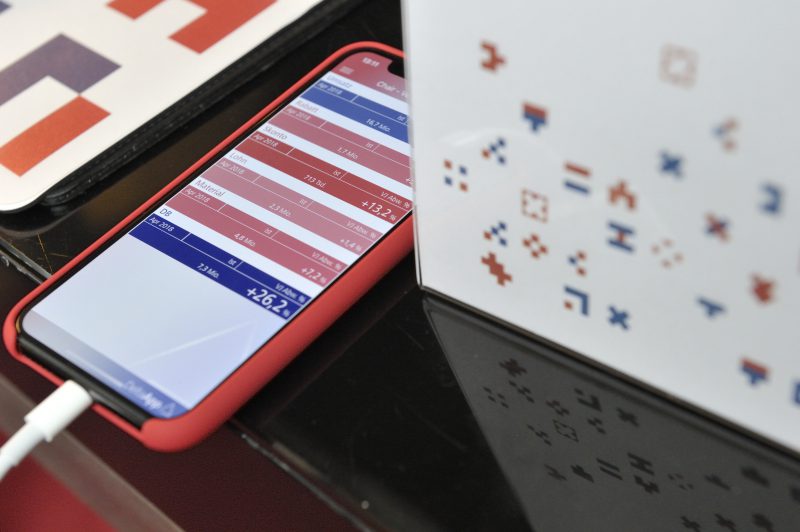 At the theme stands in the foyer, one could even test the new DeltaApp.
At the theme stands in the foyer, one could even test the new DeltaApp.
The event ended with a special image: To demonstrate that big data can rapidly turn into data mobbing when reports are badly designed, Bissantz put a paper bag over his head. Bad reports make both the sender and the recipient blind, mute and deaf. Colorful pictures cannot prevent this and we thus must go back to numbers – this was the key message of the day.
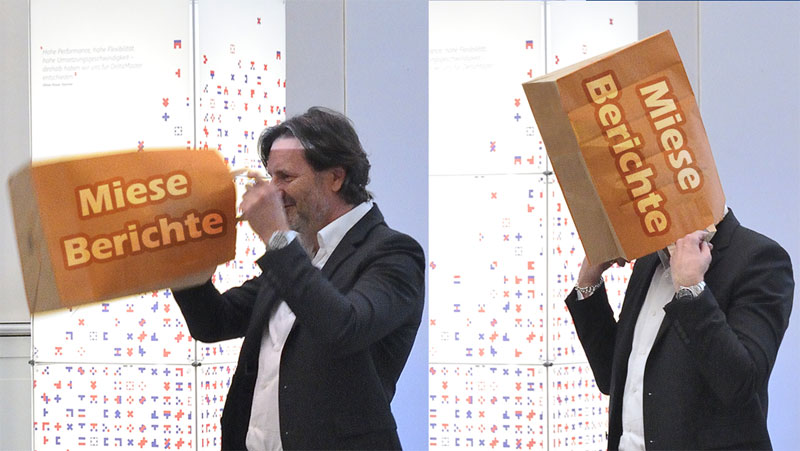 Bad reports make the sender and receiver blind, mute and deaf.
Bad reports make the sender and receiver blind, mute and deaf.
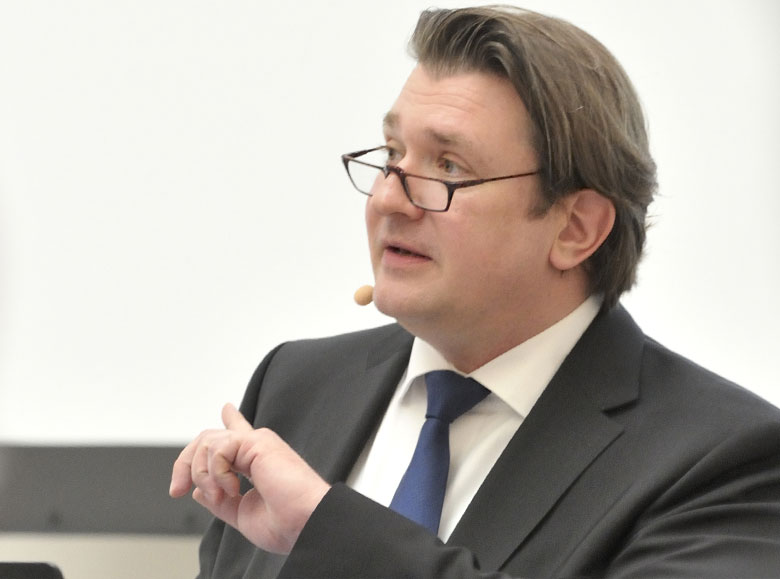 Dr. Gerald Butterwegge showed how the results of fundamental research at Bissantz have been integrated in DeltaMaster.
Dr. Gerald Butterwegge showed how the results of fundamental research at Bissantz have been integrated in DeltaMaster.